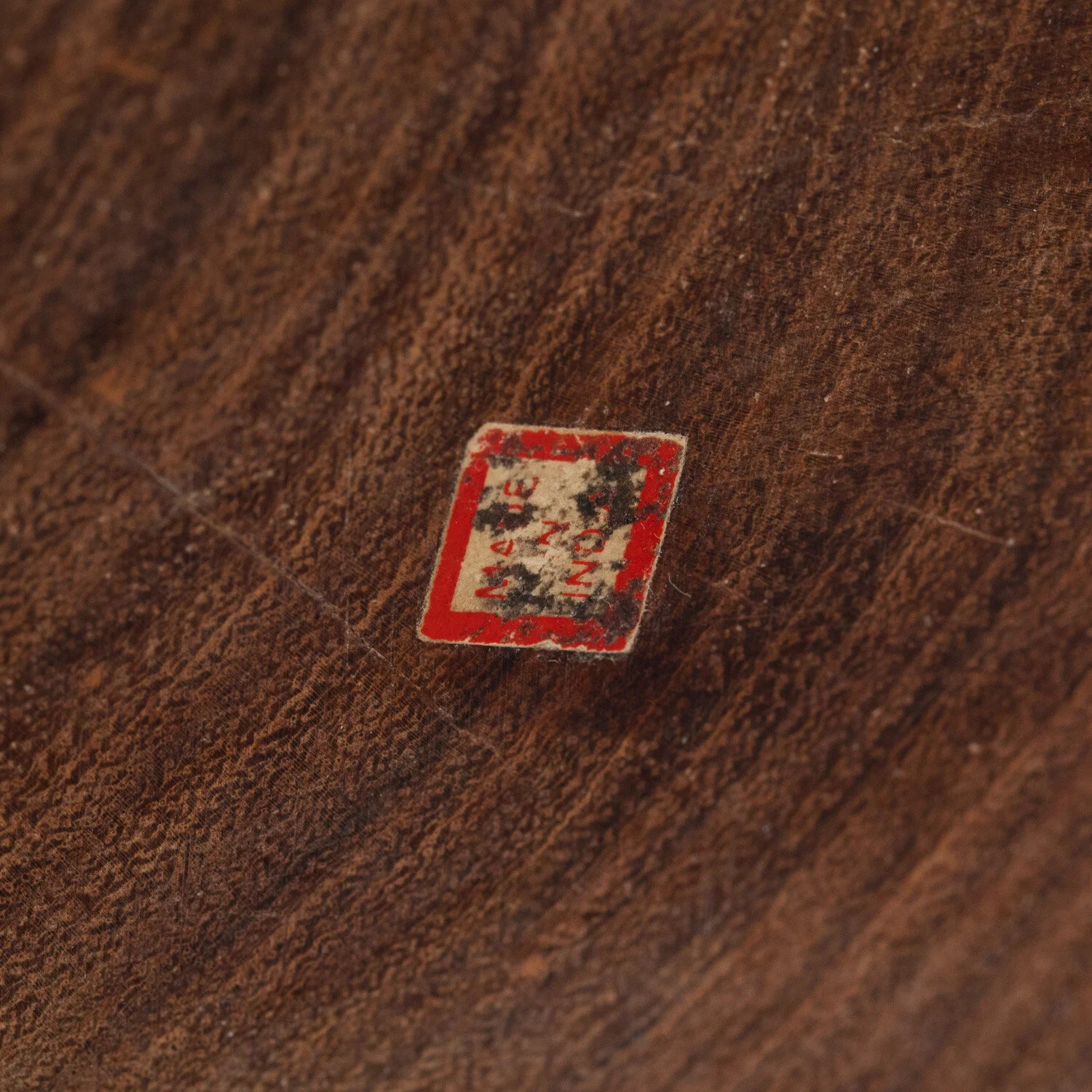Raymor Mice Bookends
Raymor Mice Bookends
Designer: Attributed to Lee Bernay (b. 1932 United States)
Item: Raymor Mice Bookends
Manufactured by: Unknown
Country of origin: India
Year made: Late 1960s to early 1970s
Materials: Walnut wood and Brass
Dimensions: 8” x 4 ½” x 5”
Description: Here is a rarely found, but heavily knocked-off, whimsical design for bookends in the shape of a wedge of Swiss Cheese with mice in them. The mouse head and tail are brass, and the holes in the cheese are filled with pieces of heavy solid brass. This design is strongly attributed to designer Lee Bernay, because the only other two authentic examples we have seen retained their original Raymor labels with the designer initials TEX. They also retained their very small square red labels that appears to read Made in India, which our pair also has retained, as shown. We know from seeing other signed and authenticated Lee Bernay designs of his whimsical wood animals and creatures with extensive brass ornamentation, and which retain his round brass coin bearing his signature and original Raymor labels that also have the designer initials TEX on the labels.
These are quite heavy due to the use of thick walnut and brass, each weighing over 2 pounds. The bottoms retain their little square red stickers that appears under a loop to read Made in India, and a darker shadow over them of where the original Raymor label had been affixed, but has since been removed. One bookend also has a shadow on its side near the top where a store price label had been affixed and removed, showing the original darker color of the walnut wood. This design has been widely copied and the many knock-offs are easily identified by their smaller and squatter size and vastly inferior quality of materials and craftmanship.
Raymor was an American importer and distributor founded in 1941 and closed in 1980 that imported designer objects to the United States for retail in department stores and other higher end retail outlets. They commissioned some of the leading designers of their day, such as Aldo Londi and Alvino Bagni for Italian ceramics. Raymor implemented a system of using initials either stamped or handwritten on their labels to identify the designer or the maker. For example, the initials BIT on Italian ceramics are for the Italian ceramics firm Bitossi or BAG for Italian designer Alvino Bagni. For this reason we believe our attribution is accurate. As for Lee Bernay, the only biographical information we have been able to find about him is that he was an American born in New York City in 1932 and studied at the Black Mountain College in North Carolina before moving back to New York City. He was said to be a teacher, designer, and musician.
Condition: Very good. One appears to have an edge using a second piece of wood, but this appears to have been done at the factory when it was made, and not a later repair. It is likely that the pieces of walnut used to make these were not always large enough so another piece was added.





